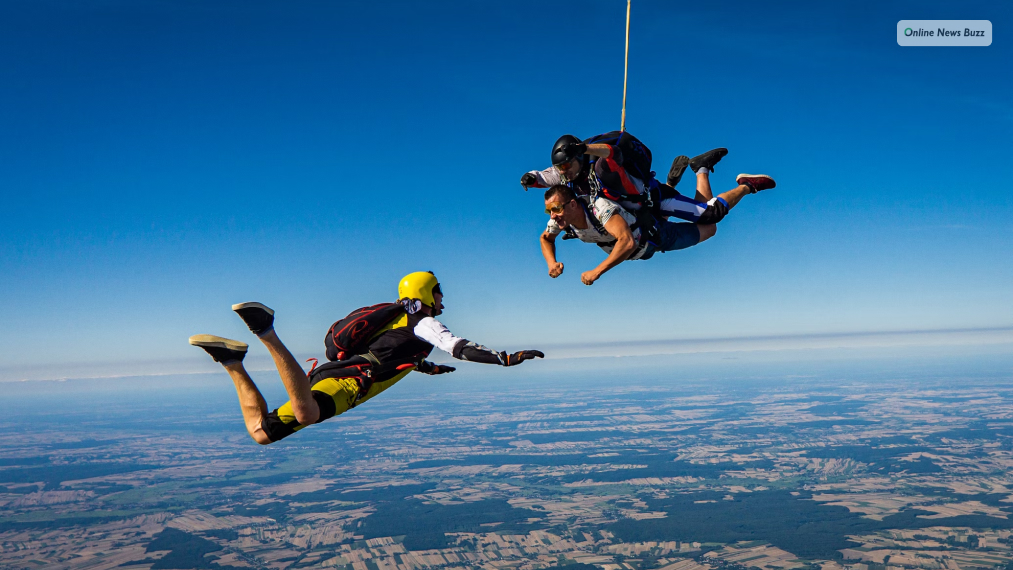
Skydiving is by far a top-notch experience when talking about exciting and thrilling adventures one should experience. It can be a hobby, a sport, or a spur-of-the-moment kind of activity.
You can also plan it for a special occasion to mark life milestones, such as birthdays, graduations, and bachelor/bachelorette parties. This activity is available for everyone as long as they are at a legal age, with a few exceptions from pregnant women and those with heart issues for safety reasons.
However, as much as it’s a fantastic experience, there’s still a possibility of unprecedented events happening. The chances of one experiencing a skydiving accident are meager but not zero. Therefore, utmost vigilance and care are expected from both skydivers and companies when exercising this activity. Life is at stake.
There are preliminary steps and things one must know before skydiving. This includes the liability, safety standards, and risks. If one is ready for this type of adventure, dive in for more information.

1. Accident Liability:
Although the chances of skydiving accidents are low, it’s still possible. Who should be liable then—the skydiver or the company operating the business?
The answer depends on the situation and evidence. Skydiving companies require their clients to sign a waiver. This means that if any accident were to happen to a skydiver, the company would not be held responsible at all. Of course, the release also seeks confirmation from the skydiver that they understand the potential risks, terms, and conditions. Once a signature has been placed, it assures the win of the skydiving company.
However, courts can nullify waivers when provided with irrefutable proof that the skydiving accident was caused by human error and negligence of the skydiving company. Overall, one should be careful when it comes to waivers. They can be tricky, and one may be deprived of receiving financial help if anything happens. However, there is still an option of consulting a lawyer.
2. Equipment Safety Standards:
Just like any other thrill-inducing activity, skydiving has its equipment safety. This is to ensure that skydivers are safe and satisfied during the fall. The essential equipment is as follows:
Altimeter-
This is an instrument that measures the height above the level of the Earth. It gives the skydiver a precise prediction of their falling speed. However, the skydiving instructor will be responsible for whether a digital display hand-held or a helmet audio altimeter will be used. This instrument notifies when to deploy the canopy and allows optimization of free-falls and sailing time.
Harness-
This equipment is critical in holding the parachute to the skydiver. This should be inspected at least twice before the jump. A loose harness can be very dangerous.
Automatic Activation Device (AAD)-
For proper centers, AAD is a must. This equipment will ensure that the parachute will deploy at the right altitude if the skydiver forgets to do it manually.
3. Accident Factors:
Skydiving has a low accident rate. However, if there are any notable ones, it’s usually due to negligence and human error. Some accidental factors are as follows:
- Neglect of safety checks before each flight
- Incorrect calculations of weight and balance
- Insufficient implementation of escape and recovery procedures
- Inadequate aircraft maintenance and inspection
- Inconsistency of the appropriate speed during the flight
- Insufficient pilot training in operation-specific courses
- Inadequate oversight and enforcement from the Federal Aviation Administration
4. Waivers:
Generally, waivers are more binding the more specific they are, making it difficult for courts to dismiss plaintiffs’ complaints. Most often than not, businesses are also guaranteed professional liability insurance.
However, in relation to accident liability, a plaintiff may win against negligence complaints against the defendant if the incident meets these five criteria:
- The defendant was responsible for the safety of the plaintiff.
- The defendant neglected that duty.
- The defendant’s actions perpetuated harm to the plaintiff.
- The harm could have been avoided.
- The plaintiff has acquired damages, both monetary and non-monetary, as a result of the defendant’s negligence.
5. Risks:
Before the actual skydiving, a waiver will have to be signed by the skydiver for his consent and understanding of the potential risks as well as the terms and conditions if any accident may occur. But if ever a skydiving accident occurs due to the company’s negligence, the plaintiff may pursue damages.
There are two types of damages categorized as economic and non-economic. Monetary damages are for the restoration of the victim’s financial state before the accident. Economic damages include:
- medical bills and expenses
- lost wages
- property damages
- cost of care
- transportation services
- loss of income
On the other hand, non-economic damages may be issued to the victim when they have suffered harm to their dignity or have endured humiliation or that the defendant purposely avoided doing their responsibilities to keep the victim out of harm’s way.
Should You be Skydiving? (…and When You Shouldn’t)

The concept of skydiving is thrilling. Leap out of a plane, feel the wind gushing past you, and free-fall in the sky.
Yes, it is an unbeatable experience for most people around the world. However, before you hastily book your first skydive, ask yourself if it’s something you should really be doing right now.
After all, it is not for everyone, and maybe it is not the right time!
1. How Physically Ready Are You?
Skydiving is not physically demanding, but you need to have some physical endurance. You don’t have to be an athlete, but your health should be reasonably good.
If you have any health conditions, e.g., heart problems, back problems, severe asthma, etc., please consult your doctor.
Are you pregnant? Wait till after the baby’s born, dear!
2. Mental Readiness
Skydiving can be mentally intense!
If you’re someone who really struggles with extreme anxiety or fear of heights, it might not be the best choice.
At least not without some mental preparation. But again, some people find that skydiving helps them face their fears head-on!
However, you wouldn’t want to have a panic attack at altitude. So, make a very careful decision!
Are you up for that challenge?
3. Age
Most skydiving centers will require you to be at least 18 years old to jump.
Some may let you jump if you’re younger with a parent’s or guardian’s permission, though, so check the regulations in your local area.
4. Weight Limits
Skydiving equipment is designed to handle specific weight ranges for safety reasons.
Most skydiving centers have a weight limit between 200-240 pounds.
If you’re concerned about this, call the center beforehand and ask about their specific guidelines.
5. Financial Considerations
Let’s be real: skydiving isn’t cheap!
A tandem jump can run you anywhere between $150–$300, depending on where you go and if you decide to throw down for photos or videos.
Be sure this is an experience you’re ready to invest in before you put your money where your mouth is.
In the end, skydiving is a thrill that many people have on their bucket list if you’re healthy, mentally sound, and game for adventure jumping!
However, if there are any red flags surrounding these issues or others, don’t be afraid to sit it out.
Safety is a Priority!
In whatever activity one might indulge in, safety comes first. Experiences and memories can be done over many times, but everyone has a single shot in life.
If one is keen on their safety, there will be more chances to enjoy and explore unique skydiving spots worldwide.




























